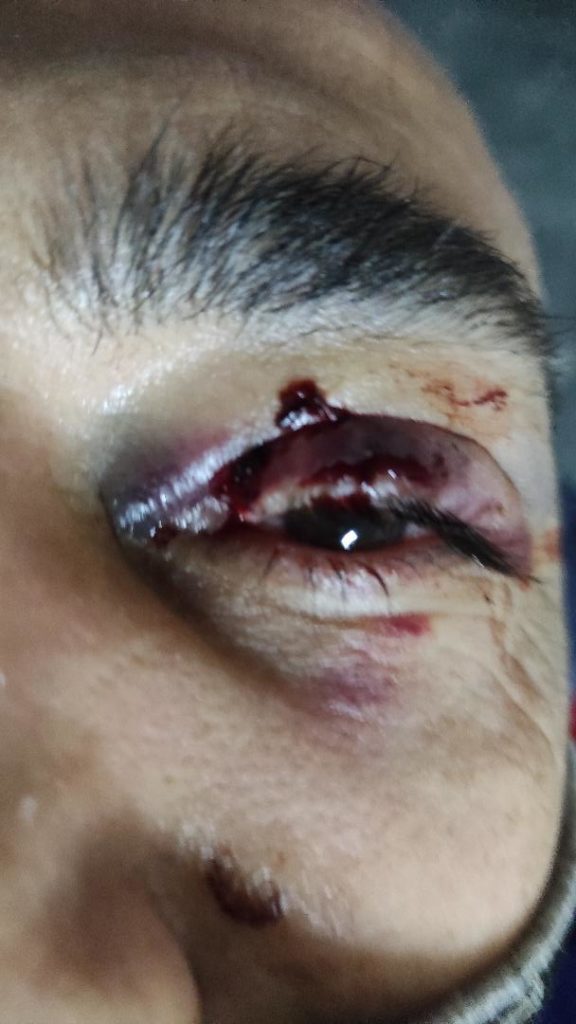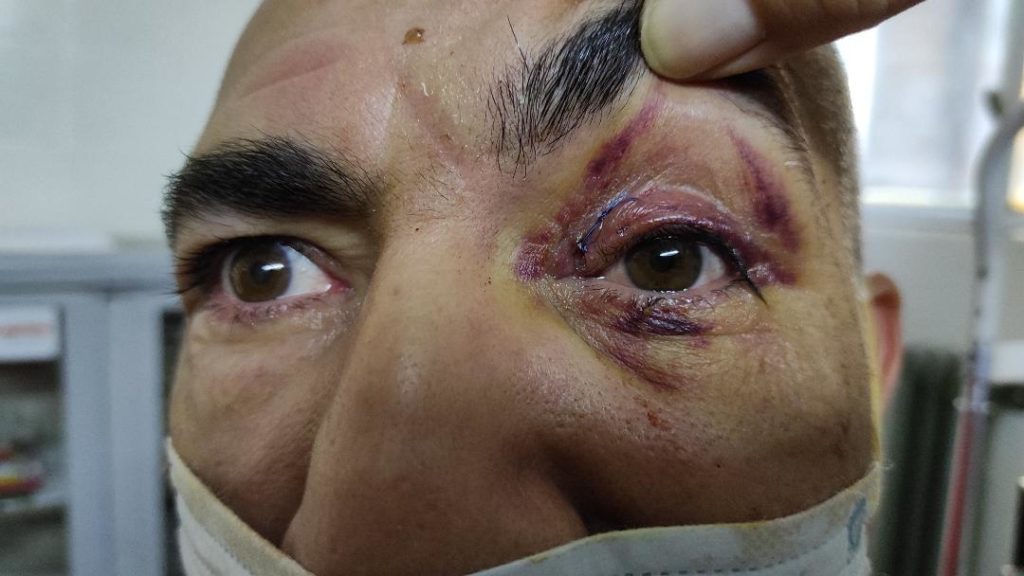Quickdraw Hooks Climber’s Eye, Here’s His Advice on Bolt Placement
"It would be great to avoid the misconception that more bolts means safer routes"

Argentinian Juan Corvalán is a 48-year-old self described weekend warrior who’s been climbing for 25 years. He’s spent much of his time developing routes at different areas around Córdoba ,the capital city of an in-land province of the same name, in places such as Los Gigantes and La Ola.
He recently reached out to us to share his story about an accident that could have been prevented if the climber who bolted a certain route had placed the bolts in a different, and arguably better, spot on the climb.
He said, “I’m writing to share with you information I believe may be useful to help prevent very serious climbing accidents.”
Quickdraw to the eye accident by Juan Corvalán
I took part on a freak occurrence on Aug. 14, 2021, which, despite its improbability, happened all the same. Its outcome might be described as nothing short of a miracle. And I haven’t found on the internet a recorded incident even remotely similar so far. So I decided to write to you to make it public and perhaps alert route developers and rock climbers everywhere in this regard that an accident like this can actually happen.
I was attempting a short, eight-metre 6c (french difficulty scale) route which I established (I climbed the line ground-up but never placed any bolts because I thought it would be unsafe to clip them and it was too short a climb to be worth the risk. I only worked and finally flashed the line) on tope-rope 20 years ago.
In my opinion, it is still a beautiful line today, sort of a highball, actually a friend free-soloed it not long ago, and it was a robust line at that time. Just to be safe, we used to top-rope it from the anchors at the end of a very near crack climb that sits to the right.
Back then I reflected on the nature of the route, the context (the wall by the river) where it was embedded and the potential for injury for a lead climber if I bolted the line, and finally chose not to. Since it was so short and the line traverses to the left a couple of moves up, making it unsafe to belay from the foot of the wall because the belayer would be jerked up and away from the rock deck where they would be standing and then far left if a lead climber fell, maybe ending bumping heads or one or both in the river with at least a sprained ankle.
I thought bolting it would be a mistake, so I never did. Alas, another climber did bolt my line some eight years or so ago.
At first, I had mixed feelings on his bolting without even asking my opinion, but then I felt it was a nice gesture on his part (since I know the guy) and didn’t give it any more thought and left the bolts he placed untouched and the matter undiscussed.
I even flashed the line a couple of times. Now that it was bolted, it felt pretty nice. However, I have a feeling now that it felt nice back then, only because I never fell on the crux.
The crux is no more than four or five moves, 1.5 metres off the deck. The start requires precise foot work and opposing side-pull crimps on mostly very defined edges. After that, it leans back, it does so but on very comfy jugs all the way to the top.
The climber who bolted the line decided to protect the crux placing the first bolt practically in front of the climber’s face. And the trouble is that the quickdraw and the rope get very much in the way of the hands; especially the right hand, as you perform the hand moves while on an unstable squat on one foot, on a slanted ledge. I hadn’t notice the interference between the hands and rope and quickdraw when I was leading the climb before or it didn’t seem to bother me then.
This time, however, it turned out that it set the perfect scenario for a catastrophe because when I was on that full-down squat on one foot, I fell. It’s hard to picture the sequence that followed but I’ll do my best to describe it.
As I was falling, in that split second, the rope jerked the quickdraw while at the same time my right hand (being entangled with the rope and snapping off from the side pull towards my body) slapped the quickdraw and made it swing upward in such a way that the bent-gate (lower) biner hooked my left eye.

My belayer friend witnessed the seemingly impossible happen and immediately turned away in disgust of my gushing face, while nonetheless effectively arresting my fall, as sudden and short as it actually was.
As unfortunate and improbable as my accident seemed, I got lucky. The biner only managed to tear my upper eye lid of my left eye, missing my eyeball by a hair.
Anyway, all I can think of now is “if only that first bolt had been 40 cm higher and 40 cm further to the right,” which brings me to the point regarding the responsibility that climbers putting up routes or climbers placing bolts (who at least here in Argentina may not be the same people) have when it comes to the safety of routes.
I hope these words help route developers, who I’m sure are mostly passionate, kind-hearted people trying to give their best every time they put up a route, reflect on certain aspects before placing the bolts others will trust to be safe.
It would be great to avoid the misconception that more bolts means safer routes. Or that the closer a bolt is to the climber, the safer they will be. As I have said above, the fact of the matter is there are times when the opposite is true.
It would be better to approach bolting not as simply placing bolts on a rock face but instead as an attempt to protect a climber in motion along a line of free-climbing moves. In other words, avoiding placing bolts where the quickdraws or the rope or both could interfere with the climber’s moving hands or feet or be too close to the climber’s face.

Sticking to the spirit of “To Bolt Or Not To Be” by the UIAA Mountaineering Commission, it would be wise to use a minimum number of bolts but in the precise location so as to protect a climber from while at the same time keeping environmental impact to a minimum. Or even refrain entirely from placing bolts where a safer option (top-rope maybe) could be available.
So perhaps while developers may very well be the primary responsible for the safety of a rock climb, the fact is that climbers also bear the responsibility to reasonably assess risks on rock climbing routes.
Maybe climbers should give feedback to the developers regarding the safety of their routes so improvements could be made. Maybe it might be better to back away from suspiciously risky lines. Or maybe a climber should even alert other climbers attempting a line inadvertently taking unjustifiable risks.
I just hope the account of my accident has been clear and useful enough to make climbers and developers reflect on safety for the benefit of all of us climbers. Thank you for your time and patience.



